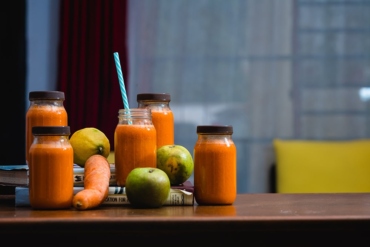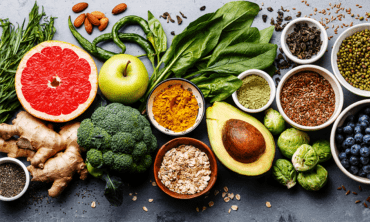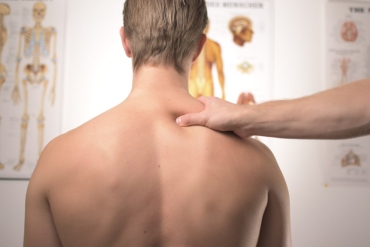Totum chiropractor Stacy Irvine and her kids appeared on CityLine to get a quick paddleboard lesson with expert John Helfrich, before setting out on the water for some fun.
Click here to watch the full segment.


Totum chiropractor Stacy Irvine and her kids appeared on CityLine to get a quick paddleboard lesson with expert John Helfrich, before setting out on the water for some fun.
Click here to watch the full segment.

Pack Snacks! If you are trying to stay healthy then plan ahead for daily snacks. Mixing veggies and protein or veggies and a healthy fat will provide an energy boost between meals, without a spike in blood sugar. Avoid breads and baked goods and try 1-2 cups of veggies and a 1/3 cup hummus or two hard-boiled eggs or 1oz of nuts. If you have a workout planned within 2-3 hours then add a piece of fruit.
Clean Up! Avoid refined, processed foods with additives, preservatives and chemicals such as artificial sweeteners, colourings, flavourings, as they will only deplete your body of nutrients. Read the ingredient list – if you don’t know what it is, don’t buy it!
Get Cooking! Try cooking foods more often so that you can control what goes in the meal. Home made foods are generally better for you. During the week plan for quick meals such as quinoa, chicken breast and a pile of bright vegetables that can be made in 15 minutes. Make a little bit extra for lunch the next day. When you have more time try making a larger portions of soup, chili or a roast that can be used over a couple days.
Water Up! Make sure you start all workouts in a hydrated state. When dehydrated you can’t perform at their best and you increase risk for injury, such as muscle tears or strains. Consume 2-4 cups of water in the 2-4 hour window leading up to your workout. For workouts lasting longer than 60 minutes make sure you carry water and consume 1/2 to 1 cup of water every 15 – 20 minutes to prevent dehydration.
Eat your Veggies! Do you get the 7-10 servings of vegetables that an active individual needs per day? Vegetables are dense in nutrition but low in calories. They offer lots of fibre, vitamins, minerals and bioflavanoids. It’s important to eat a variety of them from all colour groups to increase your nutrient spectrum.

Help control inflammation through your diet. Face it: training is hard on the body with all that pounding our muscles, joints and ligaments face a lot of stress. Too much stress leads to inflammation in the body, which over time can lead to injury. Add anti-inflammatory foods to your diet daily, such as ginger, turmeric, pineapple, fish oil and garlic, to help keep your inflammation in check and your immune system strong.
Build a Better Breakfast. It’s important to eat a good breakfast daily. Aim to consume 20-25% of your daily calories at breakfast to keep you fuelled longer and help ward off evening eating excess. On days when you are not training first thing, try swapping out the oatmeal for some eggs and handful of nuts. Or have a protein rich smoothie with veggies, 1/2 an avocado and only 1 cup of fruit. Proteins and fats will give your body long lasting energy and make you feel more satisfied and reduce cravings later on in the day. If you are training first thing in the morning, easy to digest carbs are the way to go, as they digest quickly so you can get on with your workout.
“I Train To Eat!” Sound familiar? Well, training is not an excuse to eat whatever you want! The more stress you put on your body through training demands, the better your diet should be, not the other way around. Not only do you need to worry about the number of calories, carbs, proteins and fat — you also need to consider all the micro-nutrients such as vitamins, minerals, enzymes and bioflavanoids that your body needs increased amounts from to support your training. Focus on the more nutrient-dense, not calorie-dense foods, to offer you the most bang for your buck. Load up on veggies throughout the day, and say no to refined carbohydrates and processed foods.
Grocery Shop with a Plan! Wandering through the grocery aisles without a list will leave you open to poor food choices. Take 10 minutes before going to the store an plan out a few days worth of meals and then identify what ingredients you need and stick to the list.
Up your Omega-3! Fish with the highest amount of EPA/DHA omega-3s are salmon, mackerel and sardine. Other good sources include herring, anchovy, lake trout, rainbow trout and tuna. Seven to ten ounces of fish per week is a good start to reaching your omega-3 intake. Another type of Omega-3 is alpha-linolenic acid which is found in certain plants. There are fewer contaminants in vegetable oils. Flax is the highest source of alpha-linolenic acid, then chia seed, hemp seed, pumpkin seed and walnut.

Overview: Shoulder injuries are repeatedly seen to impact the careers of tennis players at all levels of play. The shoulder complex comprises 4 different joints, each contributing to the great amount of mobility and stability seen during complex shoulder movements. When this delicate equilibrium between mobility and stability is compromised, the shoulder is vulnerable to injury.
Why is the shoulder so vulnerable to injury?
Large forces go through the shoulder joint during the tennis serve as energy is transferred from the ground up: ground reaction forces → legs/hips/trunk → shoulder/upper arm
*a break in a link in a proximal segment will create larger demand on the next segments, like the shoulder
What provides stability and mobility in your shoulder during movement?
| Shoulder Mobility | Shoulder Stability |
| Shoulder blade control is vital during the serving motion as it (1) provides a stable base for the arm, (2) rotates upwards to get it out of the way from the arm, (3) moves around the rib cage, and (4) provides a stable base for muscles in the shoulder and upper back | Static stability: provided by your bones, ligaments (at end of range of motion), and joint capsuleDynamic stability: provided by your muscles (at the beginning of the cocking phase of the serve) |
When is the shoulder vulnerable to injury?
There are five phases of the tennis serve: (1) wind up (knee flexion, trunk rotation), (2) early cocking, (3) late cocking (position of maximal demand on the shoulder as you reach up and back), (4) acceleration phase and (5) follow-through. During the late cocking phase, it is your rotator cuff muscles’ job to stabilize the shoulder while it is in a position of extreme range of motion. If your stability or mobility is compromised during this phase, you can develop impingement syndrome, which is one of the most common tennis injuries. Some even call it ‘tennis shoulder.’ Impingement syndrome can occur when lifting the arm between 60-120º of abduction (sideways lifting) or when the lifted arm is rotated inwards. The pain is caused by one of your rotator cuff muscles getting pinched and aggravated. Repetitive impingement can lead to structural damage (e.g. rotator cuff tears).
What are your treatment options?
References